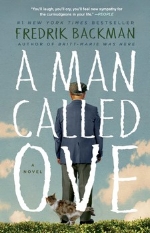Miss You Kate Eberlen (2016)
Reunion Romances: You may not know the category name, but you’ve probably read one at some point. In a Reunion Romance, the two protagonists are not attracted to each other at their first meeting or are somehow thwarted in romance. They meet again at a later time—often years later—and then really hit it off romantically. Sometimes the protagonists meet several times before realizing how suited they are to each other. The tension in Reunion Romances arises from seeing the diverging paths of the protagonists and then watching those paths converge.
In Miss You, Kate Eberlen offers a Reunion Romance with a twist: the two protagonists, Tess and Gus, don’t actually meet until the very end of the novel. Well, they do see each other in passing many times over a period of about sixteen years, and through odd coincidences, they just miss meeting a couple more times. Anticipating and then spotting their meetings is kind of like watching Alfred Hitchcock’s brief background appearances in each of his films.
Eberlen has constructed, in effect, two separate coming-of-age novels, one about Tess and one about Gus, that link after 400 pages. In August 1997, when Tess is eighteen, she takes a European backpack vacation with a friend before she’s scheduled to start at university in London in the fall. Gus, who is also eighteen and also heading to university, is in Italy with his parents, and all three are still grieving from the recent death of Gus’s older brother. In Florence, Tess and Gus run into each other at tourist spots (a basilica, a gelateria) and exchange a few words, but they never introduce themselves. That’s it. Neither one remembers or thinks about the other for many years, although they meet or almost meet several more times.
In Miss You, the individual stories of Tess and Gus, each presented in first-person narrative, are well developed. Both characters face frustrations in achieving the goals they’ve set for themselves in life. Tess has to give up her plans for university when her mother dies, leaving Tess to care for her younger sister, who has Asperger’s Syndrome. Gus, living in the shadow of his deceased brother, is pushed into studying medicine when he’d have preferred a career in the arts. Over time, Tess and Gus both have relationships with other people, but those relationships never quite work out.
Eberlen gives us full pictures of Tess and Gus, especially as they deal with the ongoing sadness of losing a close family member. And their sadness is not the same: Tess loved her mother dearly, whereas Gus was constantly bullied by his brother. The secondary characters, some of whom are doozies, come to life as well. The backdrop of London is lovingly described in many passages. Here’s one, with Tess narrating: “No movie I’ve seen captures London’s variety: the serene elegance of the white stucco buildings; the improbable red-brick Christmas cake of the Royal Albert Hall, golden Albert glinting in the sunshine; horses galloping on Rotten Row; crazy swimmers diving into the Serpentine; and, near Hyde Park Corner . . . gardens with luscious herbaceous borders and pergolas of roses, planted and tended for no other reason than to give people color to look at.” (352)
Miss You is a fun read that would be especially good to take on vacation or on a long plane trip. Sure, there are a few contrived plot elements. For example, in a city with more than eight million inhabitants, it’s not likely that Tess and Gus would end up living on the same street. But that’s the stuff of Reunion Romance! By the middle of the book I was rooting for Tess and Gus, who are kindhearted and generous people, hoping that they would find happiness.


















